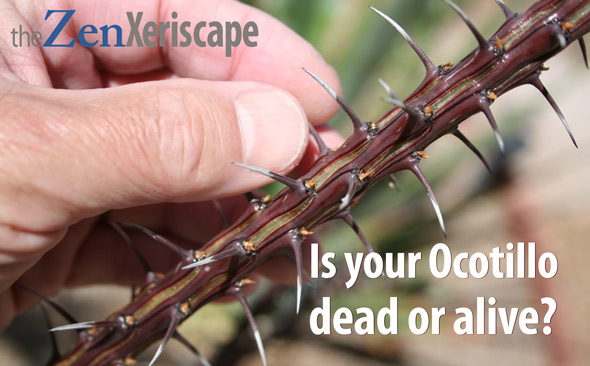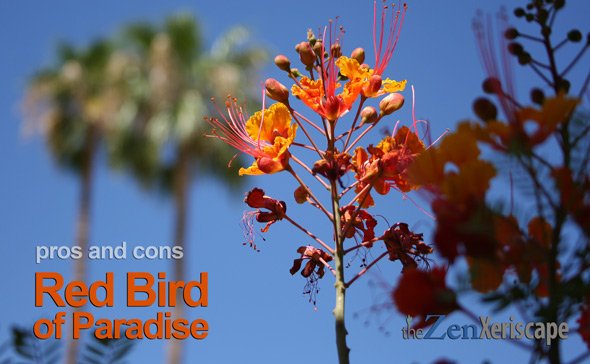The woolly butterfly bush (Buddleia marrubifolia) is native to the Chihuahuan Desert, which includes the southern Texas and northern Mexico regions. It’s a unique-looking bush that will attract lots of butterflies to your xeriscape. Here are things to consider with woolly butterfly bush care.

uniquely attractive native plant.
Below is our description and tips
about the woolly butterfly bush care.
Photo by Doug Martin
Browse the latest landscaping deals on Amazon! (As an Amazon Associate, I earn a commission from qualifying purchases.)
Woolly butterfly bush description
But before we consider caring for this native plant, let’s describe the woolly butterfly bush.
Uniquely shaped flowers
The flowers on the Woolly Butterfly Bush emerge out of a nickel-sized silvery bluish-green globular ball. As the small tubular orange flowers begin to bloom, they cluster together in a rich, deeply orange color that is irresistible to butterflies and hummingbirds.
Butterflies get to the nectar by inserting their long, thin proboscis into the flower’s tubular-shaped center. Hummingbirds access the flower’s nectar the same way. The only difference is that hummingbirds hover over the flower while they collect their nectar, and butterflies sit on a nearby leaf, branch, or the entire globe of flower clusters.
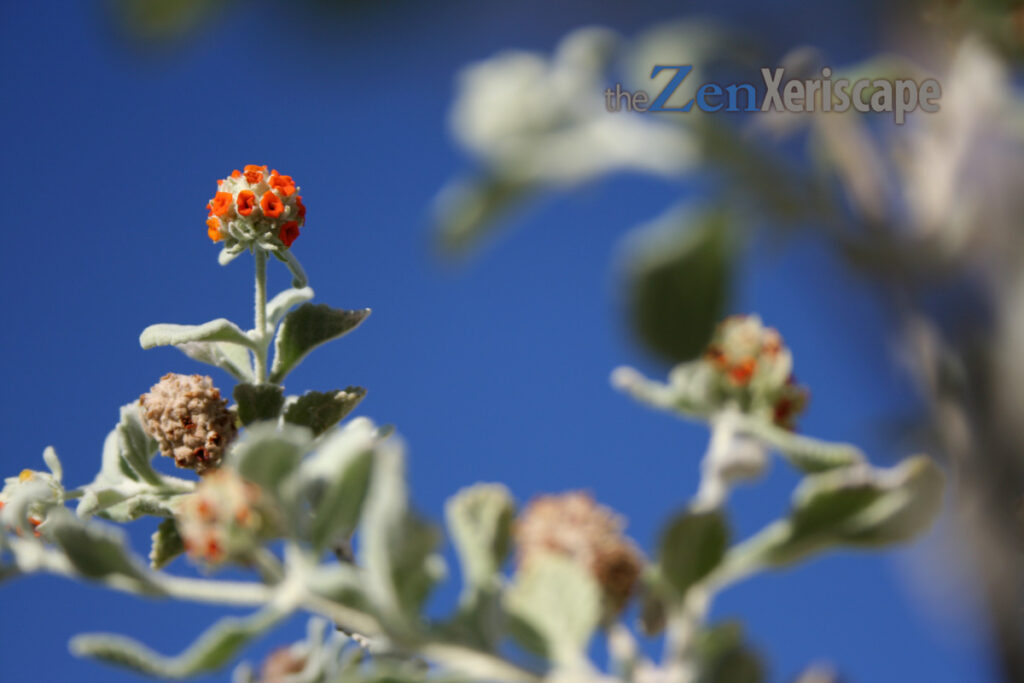
are uniquely shaped—almost like a UFO!
Notice the brown, dried-out seed cluster—
it has seeds that can be planted.
Photo by Doug Martin
Velvety leaves covered in fine hairs
This plant is covered with silvery-gray-green leaves that are engulfed with fine, off-white hairs. From a distance, the fine hairs give it a fuzzy, almost “woolly” appearance. Depending on the angle, the sunlight can give it a warm glow.
Height and width
The woolly butterfly Bush can grow up to five-feet tall and wide.
Rangy, unsymmetrical form of growth
However, this bush has a wild, naturally untidy look. Its rangy growth makes it difficult to prune into a symmetrical form.
For me, I appreciate its asymmetrical form. That untidy form adds authenticity to any xeriscape that features native plants.
Woolly butterfly bush care
Plant in full sun
The woolly butterfly bush originates from the Chihuahuan Desert, so it thrives in full sun. However, in the even hotter Sonoran Desert, this plant does benefit from a little afternoon shade during the summer.
Needs soil that drains well
Because it is a native desert plant, this bush needs well-draining soil. If necessary, amend any clay-based dirt with organic garden soil, along with a little sand.
Or, plant it on a slight elevation, where its roots will not sit in standing water. Rock gardens, with their sloping terrain, make an excellent environment for this unique plant.

that attract pollinators, including butterflies!
Photo by Doug Martin
Browse landscaping tools clearance deals on Amazon! (As an Amazon Associate, I earn a commission from qualifying purchases.)
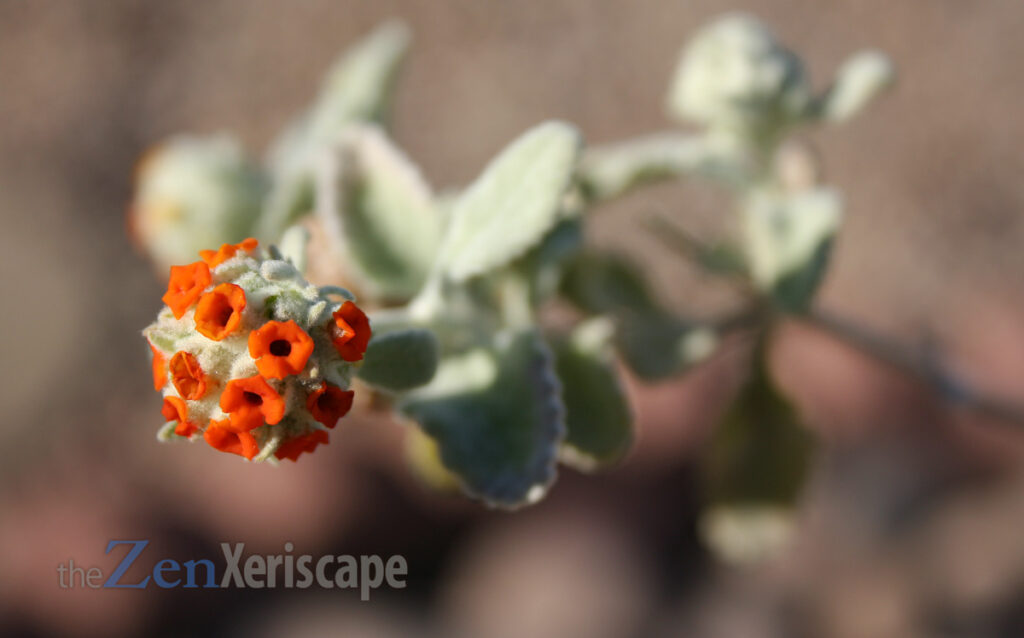
remind me of a UFO space craft!
Nature was creative with this plant.
Photo by Doug Martin
Frost tolerant, but may need winter-time protection
Generally, the woolly butterfly bush is frost-tolerant. It can survive year-after-year in USDA hardiness zones of 8-to-11.
When I lived in Las Cruces, New Mexico, this plant easily survived brief periods of low, single digit temps. However, if those colder temperatures last for more than 24-hours, it’s best to provide protection.
If cold temperatures do kill off some of the vegetation, it is likely that the roots will survive (depending on your hardiness zone), and that the plant will regrow in the spring.
Tolerant of extreme heat, but…
This bush does love full sun and, thanks to the thin hairs that cover its leaves, can thrive in extreme heat. However, I’ve found that in my landscape near Phoenix, Arizona, this plant benefits from some afternoon shade.
My theory is that in this part of the Sonoran Desert, temperatures can get much higher than what this plant experiences in the Chihuahuan Desert. Therefore, I’ve had best success by giving it some relief from the Arizonan sun, especially in summer afternoons.
Of course, depending on your hardiness zone, your experience will vary!
Once established, water infrequently
Water this bush infrequently, once established. During the summer, I water twice a month. Throughout the winter, once a month deep-waterings work well.
Prune for fuller growth
Periodically, prune offs old clusters of dried-out flowers. Regular pruning will generate fuller growth and more flower production.
In general, I don’t prune this rangy bush into a round shape. Instead, I value its natural, asymmetrical form.
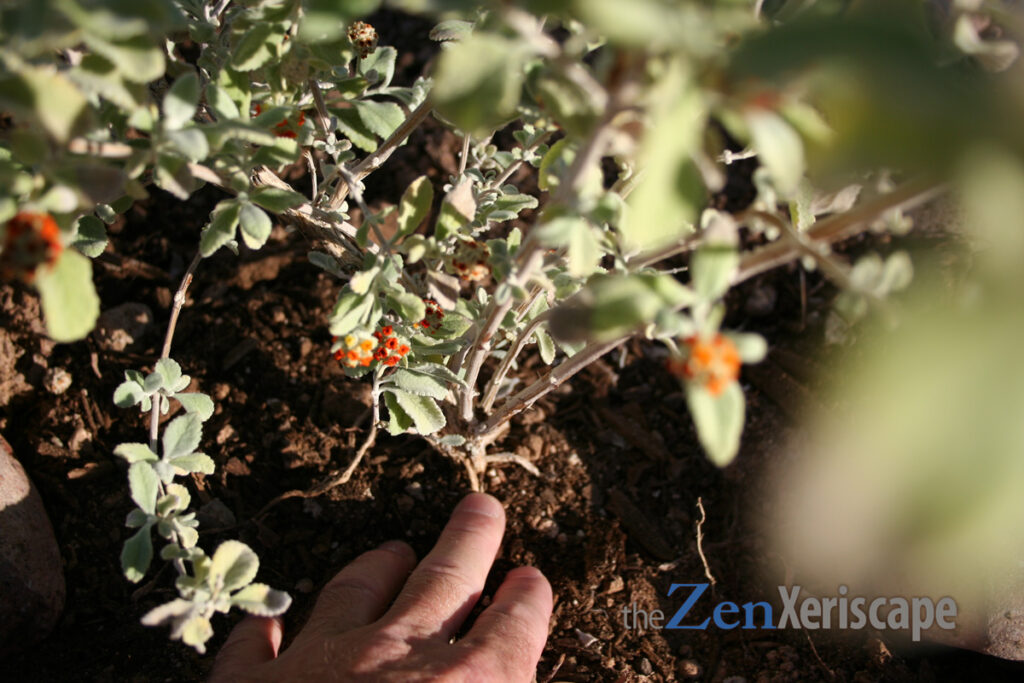
This plant requires regular pruning
to stimulate new branch and flower production.
Photo by Doug Martin
Buy potting soil for succulents! (As an Amazon Associate, I earn a commission from qualifying purchases.)
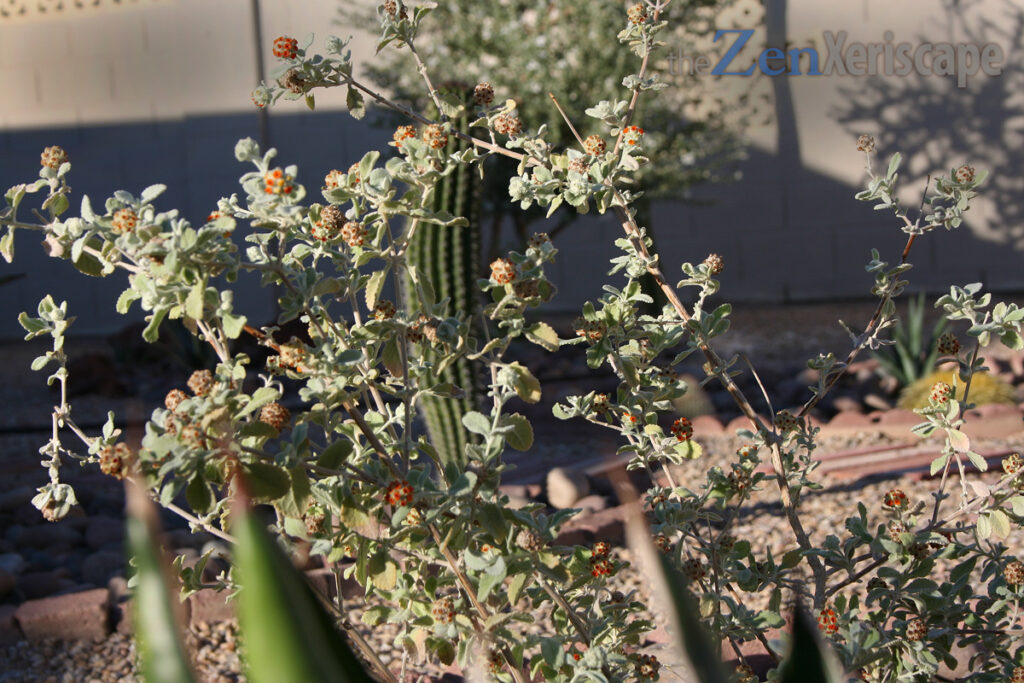
growth habit that fits in with
any arid landscape using native plants.
Photo by Doug Martin
TAKEAWAYS:
Woolly butterfly bush care
The woolly butterfly bush is a uniquely attractive native desert plant. It is drought-tolerant and works well in any xeriscape garden, rock garden, or arid landscape.
This bush has clusters of orange flowers that attract various pollinators, including butterflies. The fine hairs on its leaves appear to glow and from a distance, it appears to be covered with wool (I think that’s how it got its name)!
The best place to find this bush is at a garden center that features native plants. Hopefully, there is one in your vicinity! If not, consider ordering online—I’ve had great success with plants I’ve ordered online.
Explore the free trial plans for Prime! (As an Amazon Associate, I earn a commission from qualifying purchases.)
Content and photos by Doug Martin and The Zen Xeriscape


